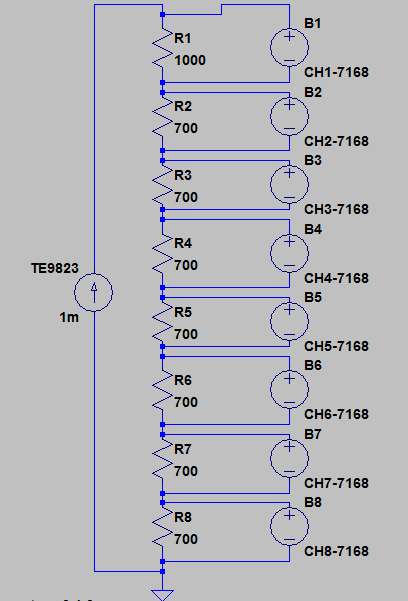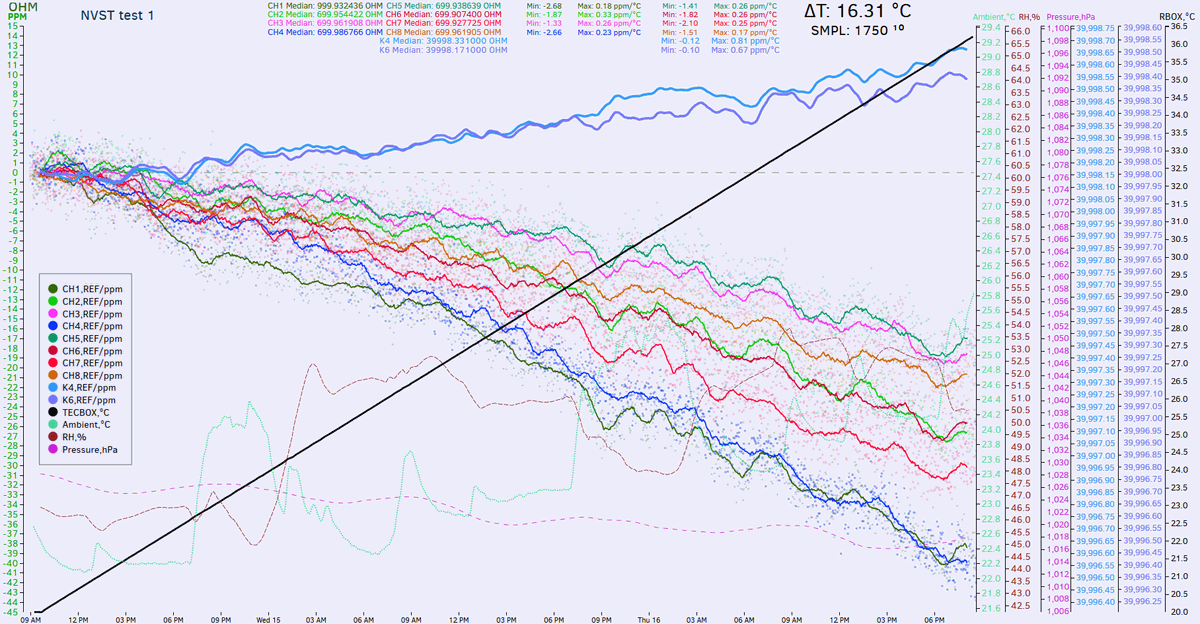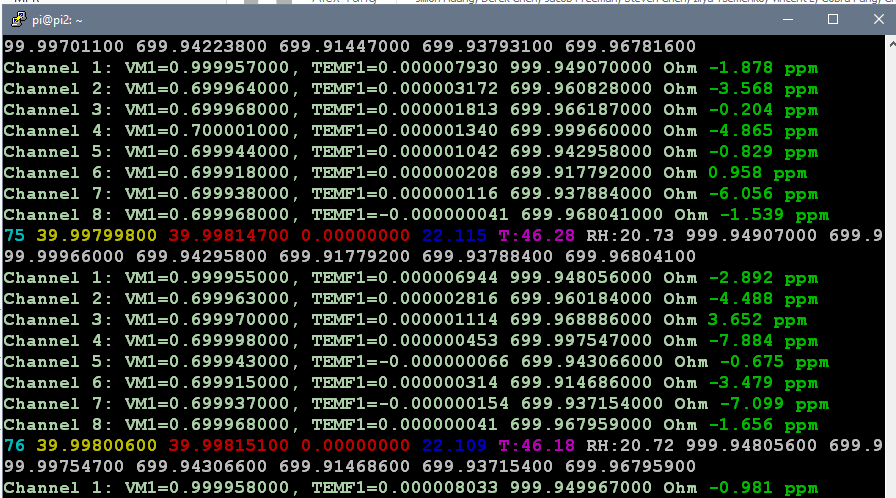First usage case of Keithley 7168 just about to get proof. As some followers might discover,
I recently snagged nice stash of 60+ pcs Vishay BMF resistors, all of which would be cool to test for tempco.
If I'd do that using two 8.5-digit meters and nV-meter+current source, that will take..
30 hours for one run, 3 resistors at at time (2002+2002+182M) = 20 runs * 30 hours/each = 600 hours + setup time. That's 25+ days of testing.

111 hours for one run, 10 resistors at a time (2002+2002+182M+7168) = 6 runs * 111 hours/each = 666 hours + setup time. 27 days of testing


Perhaps I could optimize delays/settings a bit to run scanner setup bit quicker.
Setup for regular DMMs is simple:
Keithley 2002 U1 measures 1 x VPG102L 40.000 K? #2 BMFR, 200K range, OCOMP OFF,
Keithley 2002 U2 measures 1 x VPG102L 40.000 K? #1 BMFR, 200K range, OCOMP OFF, same.
Resistor test using scanner is bit different, using
Time Electronics 9823 MFC to source stable 1.00000 mADC (confirmed by 3458A) to chain of 8 resistors (AE 1K? + S102 700? + S102 700? + S102 700? + S102 700? + S102 700? + S102 700? + S102 700?).
Keithley 7168 8-channel nanovolt scanner + RPI in K7001 chassis scanning voltage across each resistor in chain, using Kelvin connection. Resistors are tied to copper foil to keep their temperature gradients equal. After each reading with current
Keithley 182-M measures voltage across resistor, then MFC source 0.00000 mADC current and voltmeter reads TEMF compensation voltage to calculate offset compensated OHM. Formula for resulting R simply equal
V_curr_on - V_curr_off / 1E-3 mA.
Then resulting DSV-log uploaded to my server, from which on special page my ugly D3.js Javascript contraption cooks rainbow-monster graph. Deviation shown in ppm/reference, with reference values for each channel used as:
var ref_ch1 = 999.951202; // 7168 CH1
var ref_ch2 = 699.960845; // 7168 CH2
var ref_ch3 = 699.966292; // 7168 CH3
var ref_ch4 = 699.997901; // 7168 CH4
var ref_ch5 = 699.941758; // 7168 CH5
var ref_ch6 = 699.913797; // 7168 CH6
var ref_ch7 = 699.938197; // 7168 CH7
var ref_ch8 = 699.968415; // 7168 CH8
var ref_k4 = 39998.171; // 2002 4
var ref_k6 = 39998.007; // 2002 6
These are spot readings after 3 hours of 20.00C stable temperature in box. These are our "zero" points from which we calculate tempco.

Initial chart:

Script calculates min/max tempco for each channel as
ppm / max temperature from 20C baseline. JS data on page is updated in realtime as data capture goes
Come back after 111 hours

